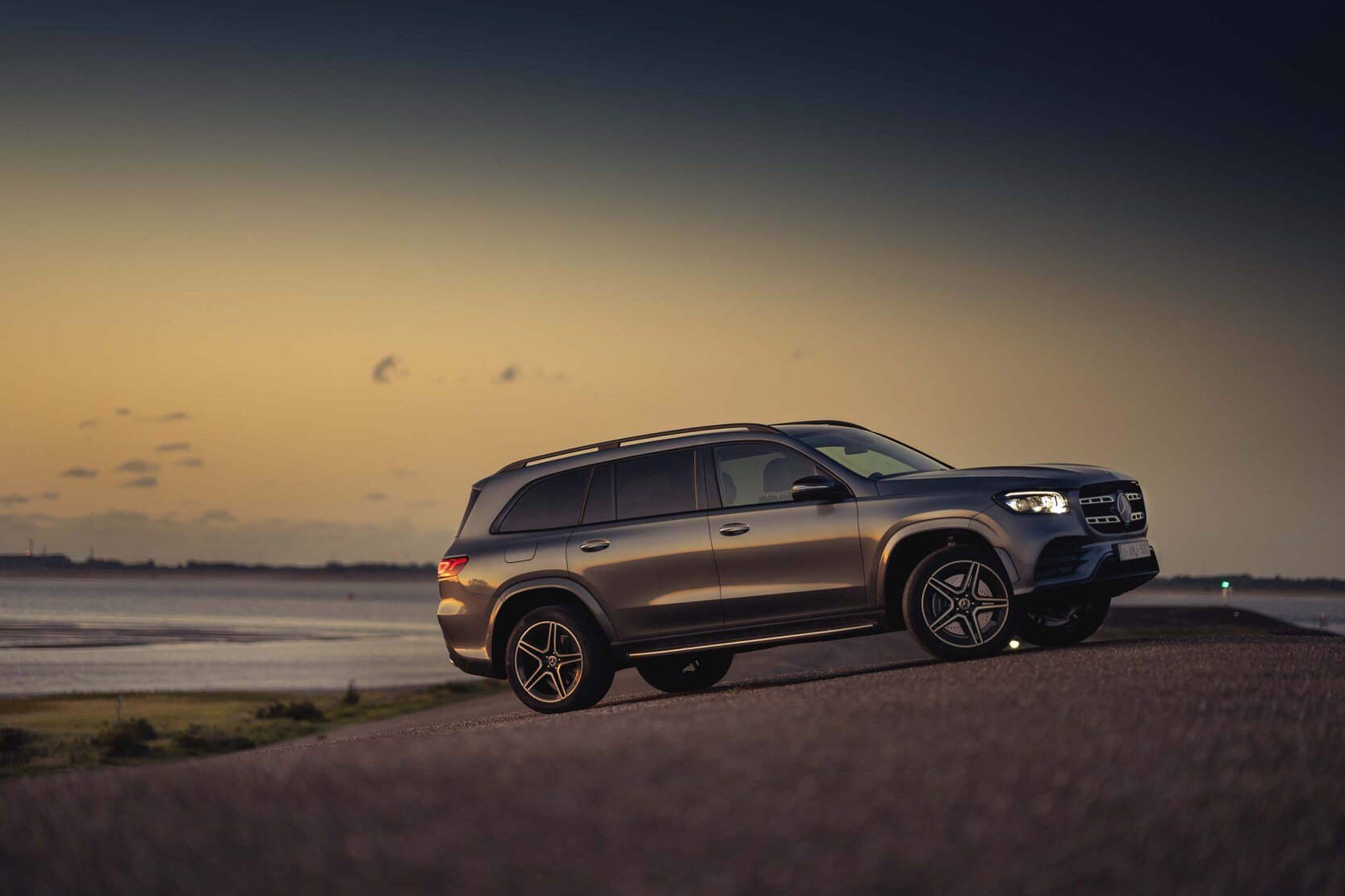Road test: Mercedes-Benz GLS 350d or GLS 400d?
Big, bigger, biggest. The second generation of the Mercedes-Benz GLS is hitting the road, and we got proper taste. More than a single taste really, as we tested the 350d and 400d. Is it really an S-Class in the shape of an SUV?
You might be wondering if 10 days of testing isn’t too much when it comes to a road test with the new Mercedes-Benz GLS. Well to be honest, I wasn’t planning to spend 10 days with this car. I planned a 7 day road trip to the Black Forest in Germany, which would take me on a 1000 kilometre drive. Winding through forests, dirty rich streets of Baden-Baden, and kilometres over the marvellous derestricted autobahn. But that trip was brutally cut in half when the GLS 350d snapped a part of its own steering housing. With no way to repair the car quickly, I was forced to head home. No complete test, no complete set of photos and no real verdict formed. Days later Mercedes-Benz already had a GLS 400d ready for me (thanks Katja), which I could pick up after testing the facelifted E-Class (review here).
What is it, the GLS?
Mercedes-Benz was the first European car manufacturer to enter this American sized segment. Back in 2011 the car was still labelled GL, and was their attempt to sell a new tank in the US. Fast forward to 2020 and its safe to say they brand has successfully conquered ground in this segment. BMW launching the X7 being the embodiment of that success. Mimicking is the biggest form of flattery they say. The best way to describe this segment is to open the dictionary on superlatives on size and just name them all. Add the German luxury component in the mix and you get the picture. Massive, humongous, gigantuous, morbid obese, super-sized. The list goes on, and on. Measuring in at 5.2 meters in length, 1.8 meters in height, and over 2 meters in width, it houses 7 seats. Dropping the last 2 rows down will give you enough space to transport an orca comfortably. Even the tires are massive, measuring in at 315 at the back for both versions I drove. Small engines? Look elsewhere! Weight? Starting at 2500 kilograms.
The GLS can be powered by Mercedes-Benz their 6 and 8 cylinder engines. Diesel only comes in the form of those 6 cylinders, the new inline engines to be precise. A smaller turbo, aka less boost, gives the 350d a 286 horsepower and 560 Nm (prices starting at € 88.451,00). Hand over a couple of thousand euros more, and Mercedes offers the 400d with 330 horsepower and 700 Nm (prices starting at € 92.686,00). Both run their power trough a 9 speed automatic, and down to all four wheels. Predominately RWD, the GLS offers a feeling of luxury when accelerating. As if a giant slowly pushed a mountain forward.
Drivetrains and ride of the Benz
Two flavours of the Mercedes-Benz GLS meant two different cars. Really, the 350d and 400d feel very different. Where the 350d feels potent and eager, the 400d feels like weaponized kinetic energy. The 350d doesn’t tempt you into darting from corner to corner, the 400d does. It’s in the spirited driving that you notice just how well Mercedes-Benz has developed the chassis. How well the torque is utilized by the drivetrain. And just how well the chassis remains balanced. Your brain has a hard time getting used to how this car can corner. It corners like it shouldn’t be able to. Both do, but the 400d will draw you there quicker with its extra 140 Nm of torque and 70 horsepower. Zero to a hundred is done in 7 seconds for the 350d and 6.3 seconds for the 400d. But the 400d hauls hard after losing inertia, harder than you think it should. Even above 200, there’s plenty left to overtake swiftly.
Steering feels a bit disconnected, but not as off as it did in the BMW. Body roll is kept predictable by E-Active Body Controll, as is understeer. Gas response is on que for both, with the engines eager to offer the torque they have. Transmission is never sluggish, even with the kickdown.
Running on diesel, and housing a 90 liter fuel tank, make the car feel like it won’t ever have to stop. Treat the gas pedal with ease, and you’re going to get 7L/100km on average. Over a 1000 kilometres on a single fuel tank, yummy. Start hammering it and the figure will go up to around 12L/100km.
Interior of the Mercedes-Benz GLS
Inside the GLS in best described as an oases of luxury. Mostly, move back to the third row and you’re confronted with large slacks of hard plastic. But that’s really the only negative thing worth mentioning. Every surface inside the car is of premium grade, with no flaws to be found. Almost everything you touch is either metal, wood, or leather. But somehow I couldn’t pull myself away from the feeling that this isn’t their best shot at quality. It didn’t feel as durable as some other cars from the brand do.
Infotainment comes in the shape of the tested and trailed MBUX, which is displayed along half of the dashboard. Being massive, it allows for 2 phones to be hooked up to Android Auto or Apple Carplay. Hooking up two phones too much? Nothing is too much for the GLS!
Residing inside this car never feels tiresome. The HUD keeps you focused on the road. Seating is comfortable, even after 8 hours (the massage seats are a gem). The cabin is immensely quiet, with only some tire noise entering the cabin. Passengers I invited to tag along were mostly happy with the legroom the Mercedes-Benz GLS offers. Again, the size being impressive.
Summary
If you read my review of the BMW X7 (if not: link here), you know that wheelbases this long are insanely comfortable. You constantly feel like it is more comfortable than your couch at home. The Mercedes-Benz GLS is no different. Luxury is present for all your senses. There are premium finishes to touch. Premium audio and also sound insulation for the ears. Your nose gets perfumed. Eyes are tickled by ambient lighting that knows no equal in quantity. Tasting is something I didn’t test, unlike Kenny did with the Porsche Taycan Turbo S (review here).
Lines on the exterior emphasize its size, making it look bloated in my eyes. Where the previous GLS posed more class, these shapes feel somewhat populistic. Still, that doesn’t mean the car isn’t good looking. It showcases perfectly what the GLS is: bigger than yours. It wears black like a mobster, grey like a slightly obese gentleman in a well-tailored suit. Build quality on the outside is top-notch, no flaws found. Inside you find similar looks: big and premium. Yet, not a premium as Mercedes-Benz can be. It’s like the brand aimed for America, aimed at 90% quality as the Americans wouldn’t notice. BMW didn’t with the X7.
Concluding
Some call it the S-Class of the SUVs, but it falls just short on that turf. Quality overall is brilliant, but it is not as well-composed as the S-Class. You are however transported in an abundance of luxury in the GLS. Transported in class and refinement. And with that abundance, you want an abundance of power at your disposal. Therefore the 400d has my preference over the 350d. It is simply more fitting for a car that embodies the top tier SUV. It highlights the technical mastery more, tempting you into using what it offers.
And if I’d have to chose between the BMW X7 and the Mercedes-Benz GLS, I’d have a tough time. Both have their pros and cons, so a blend would be best. But to brutally honest: the differences are so small, they’re trivial. Look at the product as a whole and Mercedes-Benz wins. Why? It offers the GLS in all flavours. It has two tricks up its sleeve: the Maybach and AMG versions, something BMW doesn’t offer (no, the M50 versions don’t count).













